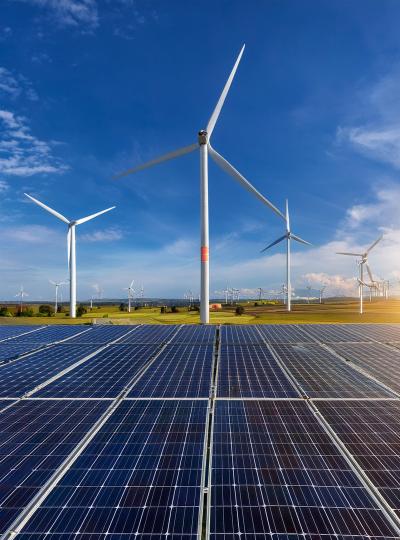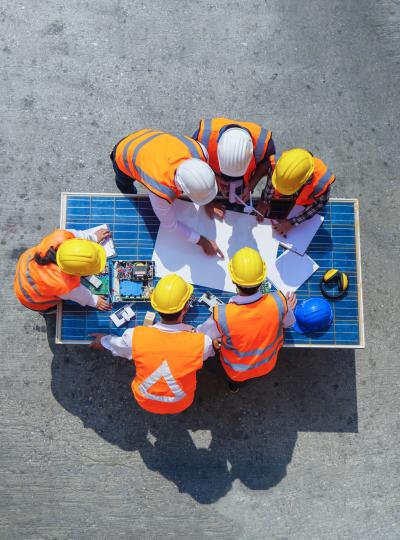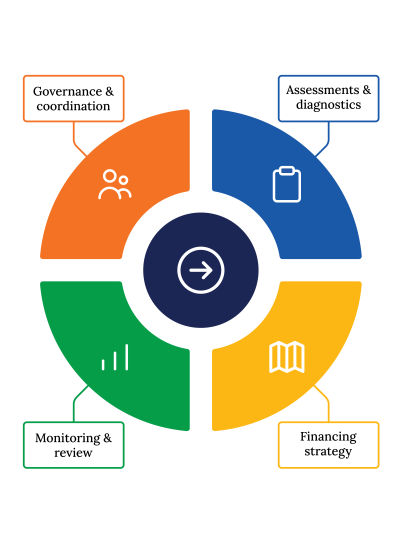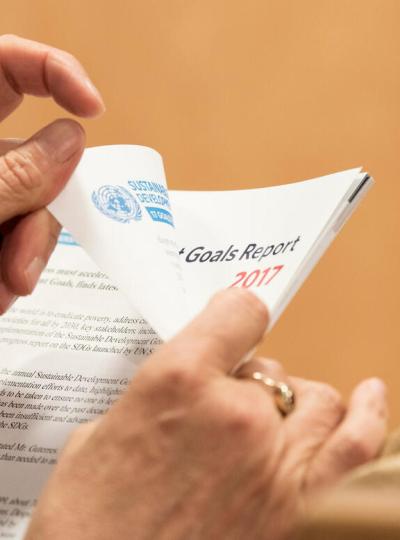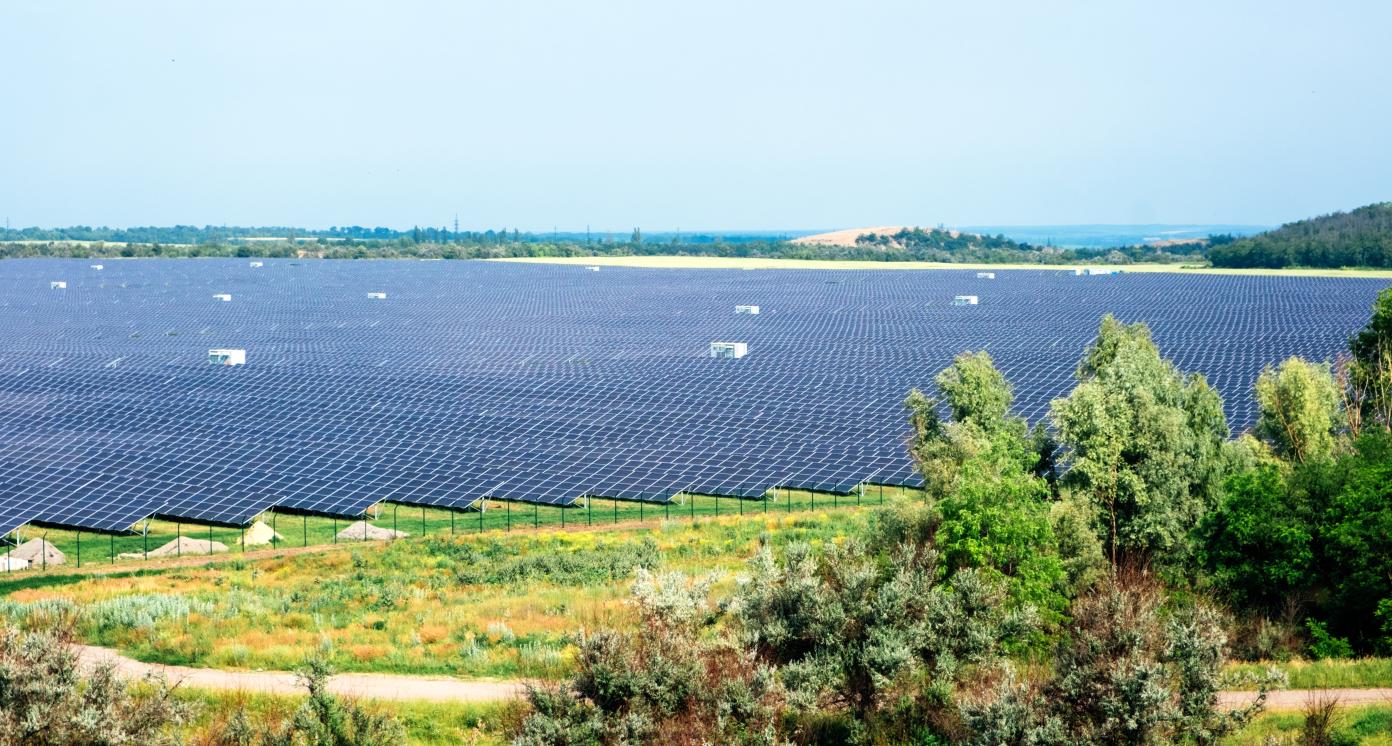Integrated Solar Energy and Storage Systems
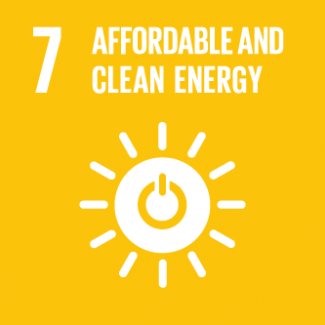
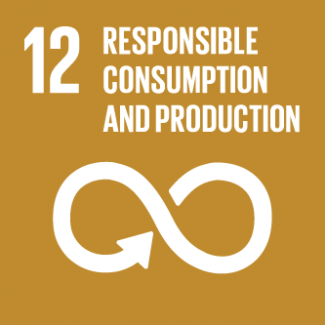
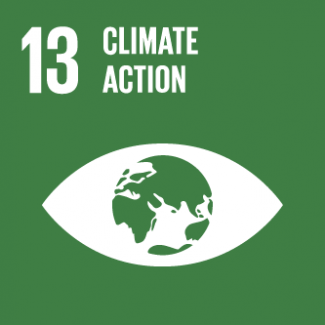
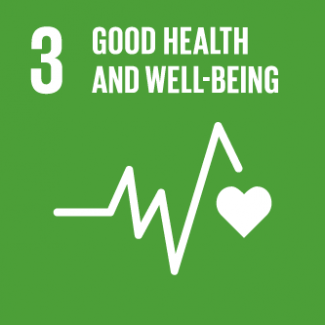
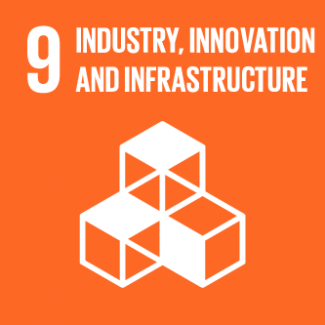
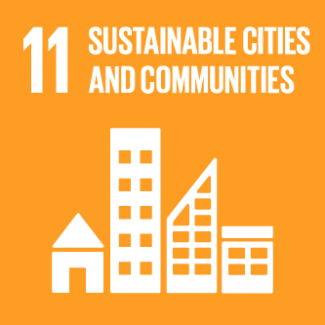
Business Model Description
Develop and operate decentralised solar energy systems, including residential, commercial, and community-based photovoltaic installations, complemented by advanced battery storage solutions for grid stability and self-sufficiency. Monetise through direct sales, leasing, power purchase agreements, and energy-as-a-service models (Subscription-Based or Pay-Per-Use) to enhance energy resilience and affordability.
Expected Impact
Expands renewable energy access, enhances grid resilience, reduces fossil fuel reliance, and fosters economic growth through solar and storage solutions.
How is this information gathered?
Investment opportunities with potential to contribute to sustainable development are based on country-level SDG Investor Maps.
Disclaimer
UNDP, the Private Finance for the SDGs, and their affiliates (collectively “UNDP”) do not seek or solicit investment for programmes, projects, or opportunities described on this site (collectively “Programmes”) or any other Programmes, and nothing on this page should constitute a solicitation for investment. The actors listed on this site are not partners of UNDP, and their inclusion should not be construed as an endorsement or recommendation by UNDP for any relationship or investment.
The descriptions on this page are provided for informational purposes only. Only companies and enterprises that appear under the case study tab have been validated and vetted through UNDP programmes such as the Growth Stage Impact Ventures (GSIV), Business Call to Action (BCtA), or through other UN agencies. Even then, under no circumstances should their appearance on this website be construed as an endorsement for any relationship or investment. UNDP assumes no liability for investment losses directly or indirectly resulting from recommendations made, implied, or inferred by its research. Likewise, UNDP assumes no claim to investment gains directly or indirectly resulting from trading profits, investment management, or advisory fees obtained by following investment recommendations made, implied, or inferred by its research.
Investment involves risk, and all investments should be made with the supervision of a professional investment manager or advisor. The materials on the website are not an offer to sell or a solicitation of an offer to buy any investment, security, or commodity, nor shall any security be offered or sold to any person, in any jurisdiction in which such offer would be unlawful under the securities laws of such jurisdiction.
Country & Regions
- Republic of North Macedonia: Pelagonia
- Republic of North Macedonia: Southeastern
- Republic of North Macedonia: Vardar
- Republic of North Macedonia: Skopje
Sector Classification
Renewable Resources and Alternative Energy
Development need
The Republic of North Macedonia relies heavily on imported fossil fuels. This increases its energy vulnerability and carbon footprint. The need for decentralized renewable energy solutions, particularly solar, is critical to ensuring energy security, reducing long-term costs, and supporting the transition to a low-carbon economy. (1)
Policy priority
Prioritize renewable energy expansion, aligning with EU directives on green transformation. Policies promote investment in solar energy through tax incentives, streamlined permitting for photovoltaic systems, and integration into the national grid. PPPs and international funding sources, including EU Green Deal initiatives, can support the sector’s growth. (1-8)
Gender inequalities and marginalization issues
Women and marginalized communities have lower participation in energy sector employment and decision-making. Expanding decentralized solar energy systems can empower women through job creation, skill development, and entrepreneurship in energy solutions. Additionally, rural electrification can improve access to education, healthcare, and digital services for underrepresented communities. (29)
Investment opportunities introduction
The renewables sector offers promising investment potential across renewable energy, energy efficiency, sustainable agriculture, and natural resource management. Key areas include clean energy infrastructure, modernized grid systems, energy-efficient building upgrades, and climate-resilient agricultural technologies. (1, 3)
Key bottlenecks
Regulatory uncertainties, slow permitting processes, and limited access to financing for small-scale energy producers hamper sector expansion. Grid infrastructure requires upgrades to accommodate decentralized energy generation.A lack of local expertise in battery storage and smart energy management technologies calls for targeted capacity-building programs (30)
Alternative Energy
Development need
The country has high solar potential but underutilized capacity in distributed solar power generation. Expanding decentralized solar systems with battery storage is essential for the stability of the grid, the reduction of energy imports, and energy security. This aligns with national energy transition goals and enhances resilience against supply disruptions (6)
Policy priority
The NDS and the Energy Law prioritize solar energy expansion, supporting feed-in tariffs, tax incentives, and streamlined permitting for photovoltaic installations. EU alignment policies promote on-grid and off-grid solar investments, while green financing mechanisms encourage private sector participation. (1,7)
Gender inequalities and marginalization issues
Women and marginalized groups are underrepresented in the energy sector. Decentralized solar projects can improve access to electricity in underserved regions, enhance economic opportunities and promote social inclusion. Training programs and policy incentives can increase female participation in technical and managerial roles in the renewable energy sector. (31)
Investment opportunities introduction
The solar power generation subsector offers diverse investment avenues, including residential and commercial rooftop solar, industrial-scale installations, and community-based microgrids. Battery storage integration enhances profitability by optimizing energy self-consumption. EU funding and private sector involvement present long-term revenue potential.
Key bottlenecks introduction
Challenges include slow regulatory approvals, high upfront costs for storage solutions, and grid infrastructure limitations for distributed energy resources. Access to financing for small-scale solar projects remains a barrier. It requires improved subsidy mechanisms and risk-mitigation strategies to attract investors and facilitate sector growth (22)
Solar Technology and Project Developers
Pipeline Opportunity
Integrated Solar Energy and Storage Systems
Develop and operate decentralised solar energy systems, including residential, commercial, and community-based photovoltaic installations, complemented by advanced battery storage solutions for grid stability and self-sufficiency. Monetise through direct sales, leasing, power purchase agreements, and energy-as-a-service models (Subscription-Based or Pay-Per-Use) to enhance energy resilience and affordability.
Business Case
Market Size and Environment
USD 100 million - USD 1 billion
5% - 10%
North Macedonia aims to add 1 GW of solar capacity by 2030, supported by the EBRD and PPPs, with an estimated investment of $1 billion based on regional benchmarks of ~$1 million per MW. (12)
Solar energy in the Western Balkans shows strong growth, with Albania’s Karavasta Solar Park (140 MW) developed for ~$1.17 million/MW [15]. The cost for businesses to install rooftop solar systems in Serbia ranges from approx. €550,000 to €650,000 per MW. For residential installations, the cost is approx. €1 million to €1.2 million per MW. (16)
Indicative Return
10% - 15%
According to the International Renewable Energy Agency (IRENA), the country has the technical potential to generate over 8 GW of renewable electricity, of which roughly 2 GW could be cost-competitive. (18)
The average installation cost for solar photovoltaic (PV) systems in North Macedonia is approximately €0.80 per watt (~ €800,000 per MW). Businesses typically report internal rates of return (IRR) ranging between 10% and 15%. (31)
Investment Timeframe
Medium Term (5–10 years)
Structured interviews with owners and managers of solar power installation firms reveal a timeframe of 8 years. (22, 31)
Ticket Size
> USD 10 million
Market Risks & Scale Obstacles
Capital - CapEx Intensive
Market - Highly Regulated
Capital - Requires Subsidy
Impact Case
Sustainable Development Need
The Republic of North Macedonia relies on fossil fuel imports, causing price volatility and energy insecurity. Decentralized solar energy and storage enhance local energy resilience, reduce electricity costs, and support sustainable energy independence. (32)
Integrated solar energy and storage systems reduce CO₂ emissions by replacing coal and fossil fuel-based electricity with renewable solar power, contributing to EU Green Deal goals and North Macedonia’s carbon neutrality targets. (31)
Expanding solar energy access in rural and semi-urban areas boosts economic opportunities, creates green jobs, and improves energy access for marginalized communities, fostering inclusive development. (36, 37, 38)
Gender & Marginalisation
Integrated solar energy and storage systems promote STEM training, technical jobs, and leadership roles for women in the renewable energy industry, addressing gender disparities in employment and decision-making. (39)
Low-income and rural women-headed households struggle with high energy costs. Affordable solar energy solutions reduce financial burdens and improve access to clean, reliable power. (32)
Limited financing options prevent women-led businesses and farms from adopting solar energy. Targeted subsidies and green loans support inclusive economic empowerment in renewable energy. (32, 33)
Expected Development Outcome
Integrated solar energy and storage systems expand solar energy adoption, lower electricity costs and reduce energy poverty and reliance on imported fossil fuels.
By replacing coal-based electricity with solar power, integrated solar energy and storage systems reduce CO₂ emissions, improve air quality, and supports North Macedonia’s carbon neutrality and EU Green Deal commitments.
Integrated solar energy and storage systems foster green jobs in solar panel manufacturing, installation, and maintenance, empowering youth, women, and marginalized workers in the renewable energy sector.
Gender & Marginalisation
Decentralized solar solutions lower electricity costs for low-income and rural women-headed households, improving financial stability and access to clean energy.
Targeted green loans and subsidies enable women-led businesses and female farmers to adopt solar-powered solutions, fostering economic empowerment and sustainable livelihoods.
Primary SDGs addressed

7.2.1 Renewable energy share in the total final energy consumption
Share of electricity from renewable sources in total electricity production was 32.1% in 2023. (17)
National Energy and Climate Plan envisages increasing the share of renewable energy sources in gross energy consumption to 38% by 2030; 66% share in gross electricity production; 45% share in gross final energy consumption for heating and cooling; and 10% in final energy consumption in transport (8)

12.a.1 Installed renewable energy-generating capacity in developing countries (in watts per capita)
Renewable energy sources contributes 1,355 MW, equivalent to 0.753 kW per capita. (40)

13.2.2 Total greenhouse gas emissions per year
11.37 Mton CO2eq in 2023. (21)
By 2030, the NECP envisages 82% reduction in GHG net emissions compared to 1990 levels, 66% reduction in emissions in the energy sector; 45% reduction in emissions in the industrial processes and product use sector; 29% reduction in emissions in the agriculture sector; 95% reduction in emissions by increasing the forest fund; 21% reduction in emissions in the waste sector. (8)
Secondary SDGs addressed



Directly impacted stakeholders
People
Gender inequality and/or marginalization
Planet
Corporates
Public sector
Indirectly impacted stakeholders
People
Planet
Corporates
Public sector
Outcome Risks
Improper disposal of solar panels and batteries could lead to toxic waste accumulation, harming ecosystems if recycling policies and infrastructure are not adequately implemented.
Expanding decentralized solar systems without grid modernization may cause voltage fluctuations, disproportionately affecting rural and lower-income communities with outdated infrastructure.
High upfront costs of solar and battery storage may exclude low-income households and small businesses from benefiting, widening energy affordability gaps without proper financing options.
Changes in government incentives, subsidies, or feed-in tariffs could disrupt investment confidence, making solar projects financially unsustainable and slowing adoption rates.
Without targeted training and hiring policies, women may remain underrepresented in solar energy jobs, especially in STEM and leadership roles. They may face limited inclusion in the green economy.
Impact Risks
Without adequate grid upgrades, excess solar energy may not be efficiently integrated, leading to curtailment, revenue losses, and slower adoption of decentralized energy systems.
Bureaucratic delays in permitting, subsidies, or feed-in tariffs could discourage private investment, slowing the scalability of solar and storage projects across North Macedonia.
Dependence on imported solar panels, inverters, and batteries may lead to supply chain vulnerabilities, price volatility, and delays in project deployment.
Impact Classification
What
Expands renewable energy capacity, reduces fossil fuel dependence, enhances energy security, and lowers electricity costs while mitigating GHG emissions and promoting sustainability.
Who
Benefits households, businesses, rural communities, and agribusinesses by providing affordable, reliable solar energy. Focus on rural and semi-urban areas with limited grid access.
Risk
Grid instability, financial barriers, policy uncertainty, and supply chain constraints may delay scalability and adoption. Gender disparities in green jobs could limit workforce inclusivity.
Contribution
Directly increases energy access, stabilizes electricity supply, and reduces environmental impact through solar and battery storage adoption, policy incentives, and job creation.
How Much
Targets 750 MW of new solar capacity by 2040, serving thousands of households and businesses, cutting CO₂ emissions, and reducing electricity imports and fossil fuel use (8)
Impact Thesis
Expands renewable energy access, enhances grid resilience, reduces fossil fuel reliance, and fosters economic growth through solar and storage solutions.
Enabling Environment
Policy Environment
The NDS 2024-2044, outlines the key strategic priorities in the country's green transition. (1)
Strategy for Development of the Energy Sector outlines reference, moderate transition, and green scenario. Moderate transition scenario forecasts 39% of renewable energy share in total energy consumption by 2040. (6)
National Energy and Climate Plan, envisages increase of renewable energy capacity, specifically targeting a 20% share of photovoltaic (PV) energy in the electricity mix by 2030, supporting the expansion of rooftop solar installations and decentralized energy generation. (8)
Smart Specialization Strategy encourages the development of energy self-sustainable buildings, widespread utilization of renewable energy, and the introduction of innovative energy-efficient technologies. (2)
Financial Environment
Decree on Measures for Supporting Electricity Production from Renewable Energy Sources provides for Feed-in Tariffs (fixed payments per kWh) for small-scale producers of renewable energy and Feed-in Premiums (FiPs), additional payments for renewable energy producers. (42)
Tax Exemptions in Technological Industrial Development Zones. Investors are eligible for tax exemptions for up to 10 years, including relief from profit tax and personal income tax. Additionally, there are customs duty exemptions for imported equipment and raw materials (35)
Green Finance Facility, supported by EBRD and local financial institutions, provides loans to small and SMEs and households for energy efficiency and renewable energy projects (cash-back incentive of up to 10%, refunds for households of up to 30%). (28)
Regulatory Environment
Energy Law establishes the legal framework for the development and integration of renewable energy sources, including provisions that facilitate the deployment of integrated solar energy and battery storage systems. (7)
Law on Construction governs the permitting, design, and installation standards for renewable energy infrastructure on buildings and land. (23)
Decree for Preferential Tariffs of Electrical Energy (Official Gazette 56, 17.04.2013) establishes the framework for preferential tariffs aimed at promoting electricity generation from renewable energy sources. (41)
Rulebook on Renewable Sources of Energy provides detailed regulations for the development and operation of renewable energy power plants. It encompasses aspects such as electricity transfer, wind potential measurement, guarantees of origin, and the maintenance of registers. (24)
Law on Construction Land governs the allocation, use, and management of construction land, which is crucial for the development of infrastructure projects, including renewable energy installations like integrated solar and battery storage systems. (26)
Marketplace Participants
Private Sector
Solar panel manufacturers, battery storage providers, and energy technology firms (e.g., Mey Energy), renewable energy startups, commercial property developers, financial institutions. EVN home (universal supplier)
Government
Ministry of Energy, Mining, and Mineral Resources, Regulatory Commission for Energy, MEPSO, Ministry of Agriculture, Forestry and Water, Ministry of Environment.
Multilaterals
European Bank for Reconstruction and Development (EBRD) - International Finance Corporation (IFC) European Investment Bank (EIB) - UNDP, UNECE Sustainable Energy.
Non-Profit
Non-Profit: Local environmental NGOs (e.g., Association of Solar Producers "Solar Macedonia", Eko-svest, etc.)
Public-Private Partnership
Government-private partnerships in decentralized solar microgrids. Eg., the municipality of Kavadarci approved numerous applications for rooftop photovoltaic installations, totaling approximately 17.7 MW in capacity. (34)
Target Locations
Republic of North Macedonia: Pelagonia
Republic of North Macedonia: Southeastern
Republic of North Macedonia: Vardar
Republic of North Macedonia: Skopje
References
- (1) National Development Strategy of the Republic of North Macedonia 2024-2044
- (2) Smart Specialization Strategy of North Macedonia
- (3) Communication and roadmap on the European Green Deal (European Commission) https://commission.europa.eu/strategy-and-policy/priorities-2019-2024/european-green-deal_en "4) Green Agenda for Western Balkans (COMMISSION STAFF WORKING DOCUMENT Guidelines for the Implementation of the Green Agenda for the Western Balkans, Brussels, 6.10.2020 SWD(2020) 223 final)"
- (5) Just Transition Roadmap for North Macedonia, Ma 2023 (https://economy.gov.mk/content/documents/Web%20strana%20zabeleshki%20od%20Agencija%20za%20primena%20na%20jazikot%20na%20RSM%2007.07.2021.pdf)
- (6) Strategy for the Development of the Energy Sector until 2040 (Government of North Macedonia) https://vicepremier-ekonomija.gov.mk/sites/default/files/dokumenti/EnergyDevelopmentStrategy_FINAL_Submitted_toGovMK_08.01.2020_clean_za_sluzben_vesnik_za_na_web.pdf
- (7) Energy Law (“Official Gazette of the Republic of North Macedonia” no. 101/2025 from 20.05.2025)
- (8) National Energy and Climate Plan (NECP) 2022, https://www.economy.gov.mk/content/Official%20NECP_EN.pdf
- (9) OECD (2024). Western Balkans Competitiveness Outlook 2024: North Macedonia. OECD Publishing. https://doi.org/10.1787/8207326d-en
- (10) Homepage of MFC-Solar Solutions, March 7th, 2025. https://www.ecopower.mk/
- (11) Interview with Managers of EcoPower Solutions, March 7th, 2025. https://www.ecopower.mk/
- (12) Interview with Ilija Nasov, President of the Solar Association and Stefan Trajkov, project manager of "Solar Macedonia" (Published in Inovativnost.mk) https://inovativnost.mk/2020/08/25/%D1%87%D0%BB%D0%B5%D0%BD%D0%BA%D0%B8%D1%82%D0%B5-%D0%BD%D0%B0-%D1%81%D0%BE%D0%BB%D0%B0%D1%80-%D0%BC%D0%B0%D0%BA%D0%B5%D0%B4%D0%BE%D0%BD%D0%B8%D1%98%D0%B0-%D0%B3%D0%B8-%D0%B2%D0%BE/
- (13) Balkan Green Energy News. (2023). Biggest solar power plant in Western Balkans completed in Novaci in North Macedonia. Retrieved in March 2025, https://balkangreenenergynews.com/biggest-solar-power-plant-in-western-balkans-completed-in-novaci-in-north-macedonia/
- (14) North Macedonia Advances Smart Grids with EBRD Support for Renewables, Energy Curated (December 26, 2024) https://energycurated.com/energy-management/north-macedonia-advances-smart-grids-with-ebrd-support-for-renewables/
- (15) Balkan Green Energy News. 2023. Voltalia Completing Its 140 MW Solar Power Plant Karavasta in Albania. Accessed in March 2025. https://balkangreenenergynews.com/voltalia-completing-its-140-mw-solar-power-plant-karavasta-in-albania/.
- (16) Increasing Demand for Solar Panels: Over 3,000 Prosumers in Serbia, Including Monasteries (https://welcometoserbia.org/en/our_news/increasing-demand-for-solar-panels-over-3000-prosumers-in-serbia-including-monasteries/)
- (17) Energy balances, 2023, State Statistical Office, (most recent data) https://www.stat.gov.mk/pdf/2024/6.1.24.62_mk.pdf
- (18) World Bank. 2023. North Macedonia Systematic Country Diagnostic Update: Navigating Challenges, Embracing Opportunities. Washington, DC: World Bank. http://hdl.handle.net/10986/40596
- (19) North Macedonian Renewable Energy Siting Map https://tnc.maps.arcgis.com/apps/instant/media/index.html?appid=42942e8407c246cabcb43a0259ac54fb "20) Faster to A Renewable Future: Using Degraded And Unused Areas As Sites For Solar and Wind Power Plants in North Macedonia "
- (21) EDGAR (Emissions Database for Global Atmospheric Research) Community GHG Database, a collaboration between the European Commission, Joint Research Centre (JRC), the International Energy Agency (IEA) (2024) European Commission, JRC (Datasets).
- (22) Interview with Sami Morina, President of the Construction, Urbanism and Environment and Energy Group, Economic Chamber of Northwestern Macedonia (20 February 2025)
- (23) Law on Construction (Official Gazette no. 130/2009, 124/10, 18/11, 36/11, 54/11, 13/12, 144/12, 25/13, 79/13, 137/13, 163/13, 27/14, 28/14, 42/14, 115/14, 149/14, 187/14, 44/15, 129/15, 217/15, 226/15, 30/16, 31/16, 39/16, 71/16, 132/16, 35/18, 64/18 и 168/18, 244/19, 18/20, 279/20 and 227/22)
- (24) Rulebook on Renewable Sources of Energy (Official Gazette 186, from 5.09.2024)
- (25) Rulebook on licenses for performing energy activities (Official Gazette No. 51/19, 54/19, 214/19, 114/20, 246/20 and 44/21)
- (26) Law on Construction Land (Official Gazette of the Republic of Macedonia, No.15/2015 and its subsequent amendments)
- (27) Reform agenda for Western Balkans, Reform and Growth Facility for North Macedonia ( https://mep.gov.mk/data/MK_Reform%20Agenda_EN.pdf)
- (28) European Bank for Reconstruction and Development. Green Economy Financing Facility (GEFF) – North Macedonia. Available at: [https://ebrdgeff.com/macedonia_facilities/](https://ebrdgeff.com/macedonia_facilities/)(Accessed: March 2nd, 2025]).
- (29) Women entrepreneurs in North Macedonia embrace circular economy, UNDP, May 28, 2024, https://climatepromise.undp.org/news-and-stories/women-entrepreneurs-north-macedonia-embrace-circular-economy
- (30) IRENA and UNDP. (2021). De-risking investments in the Republic of North Macedonia: Renewable energy finance and policy landscape focusing on power, heating and cooling. International Renewable Energy Agency and United Nations Development Programme. https://www.irena.org/Publications/2021/Oct/De-Risking-Investments-in-North-Macedonia:contentReference[oaicite:1]{index=1}
- (31) Structured interview with Vladimir Peshevski, consultant and former Vice Prime Minister, December 18, 2024.
- (32) World Bank. (2024). North Macedonia policy notes. https://documents1.worldbank.org/curated/en/099008512112429283/pdf/IDU1102c34701ba0b146d21a1e010d27c68032cf.pdf
- (33) CEENERGYNEWS. (2024, November 1). Addressing energy poverty in the Energy Community: from data to action. CE Energy News. https://ceenergynews.com/voices/addressing-energy-poverty-in-the-energy-community-from-data-to-action/
- (34) Vujasin, M. (2022, November 9). Kavadarci in North Macedonia fostering solar power projects to become green city. Balkan Green Energy News. https://balkangreenenergynews.com/kavadarci-in-north-macedonia-fostering-solar-power-projects-to-become-green-city/
- (35) Invest North Macedonia (2025). Incentives & Taxes. https://investnorthmacedonia.gov.mk/incentives-and-taxes/
- (36) Intebako (2025) Solar energy in North Macedonia: Opportunities with photovoltaics. Intebako. https://www.intebako.com/post/solar-energy-in-north-macedonia-opportunities-with-photovoltaics
- (37) European Commission. (2024, October 30). North Macedonia 2024 Report. https://enlargement.ec.europa.eu/document/download/5f0c9185-ce46-46fc-bf44-82318ab47e88_en
- (38) World Bank (2024) World Bank Group begins a new chapter in its 30-year partnership with North Macedonia. https://www.worldbank.org/en/news/press-release/2024/01/23/world-bank-group-begins-a-new-chapter-in-its-30-year-partnership-with-north-macedonia
- (39) Dimovska Kotevska, A., & Mircevska Damjanovska, S. (2024, February 11). Narrowing the gender divide in STEM industries – Empowering girls to transform the labour market. United Nations Development Programme. https://www.undp.org/north-macedonia/news/narrowing-gender-divide-stem-industries-empowering-girls-transform-labour-market
- (40) CountryEconomy.com. (2025) North Macedonia - Electricity Generation. https://countryeconomy.com/energy-and-environment/electricity-generation/macedonia
- (41) Government of Macedonia. (2013). Regulation on Preferential Tariffs for Electricity. Official Gazette, No. 56/2013. https://www.ea.gov.mk/images/stories/E_Izdanija/Regulativa/Uredba_za_povlasteni_tarifi__SV_56_2013__665566806.pdf
- (42) Decree on Measures for Supporting Electricity Production from Renewable Energy Sources (Official Gazette No. 29 on February 5, 2019), https://www.ea.gov.mk/images/stories/2019/Uredba%20za%20merki%20za%20podrska.pdf





